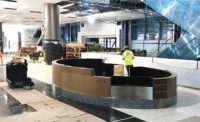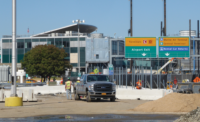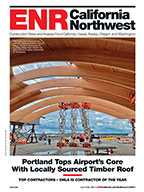Knoxville's airport rents out land to office complexes, car dealers and the U.S. Postal Service. Huntsville International Airport receives revenue from a golf course and cotton farmers. And several other airports, especially the one in Albuquerque, are seeing increasing savings and tax credits from solar panels.
American non-hub airports increasingly are turning to non-aeronautical budget enhancers as they face uncertainty in shaping long-term capital plans. "Non-aeronautical revenue represents a good opportunity for architects, engineers, contractors and investors to participate in the changing aviation environment," says Allan Shapiro, senior management consultant with Ross & Baruzzini.
Shapiro, who moderated a panel at the American Association of Airport Executives' annual conference in San Antonio last month, notes that related construction opportunities can include intermodal transportation facilities, industrial parks, commercial offices, free trade zones, solar parks and hotels.
 |
| CISNEROS |
Anchorage International Airport is handling service by converting its terminal facilities into common-use spaces for airlines, said airport manager John Parrott. Noting that 2.5 million visitors cram into the airport four months of the year, he asked, "How do you maximize the infrastructure you have?" Since airlines have merged in recent years, opposition to common-use facilities has waned, he said.
At Elmira Corning Regional Airport, "we had to figure out how to deal with dramatic changes," said Ann Crook, its director of aviation and a conference speaker. "There is an uncertainty as we try to justify project development."
To address it, the airport is using a dynamic analysis planning tool provided by engineering firm McFarland Johnson, adds Chad Nixon, a firm senior vice president. User-based scenarios that affect infrastructure planning include factors like low-cost carriers, air cargo, general aviation and air traffic changes.
Some non-hub construction is rising because of other factors. For example, Ross & Baruzzini is working with Minot International Airport on a new $40-million, 115,000-sq-ft terminal to handle dramatic growth due to the Bakken shale formation in North Dakota.
Southwest Airlines plans to complete a $519-million rebuild and expansion of Dallas Love Field in Dallas by October, said keynote speaker Gary Kelly, chairman, President and CEO of Southwest Airlines. That expansion was spurred by two major factors: Southwest's plan to expand into more long-haul flights and the repeal of the Wright Amendment, which had restricted flights out of Love Field since 1980.
Some trends remained unchanged. An audience member asked Kelly why airlines still oppose an increase in the Passenger Facility Charge, which funds airport infrastructure programs. "There is a paranoia about costs," he replied. "We probably need to continue to have a meaningful dialogue."
Frank Miller, San Antonio's aviation director, replied, "There are more than a few people here who'd be glad to help you with that dialogue."





Post a comment to this article
Report Abusive Comment